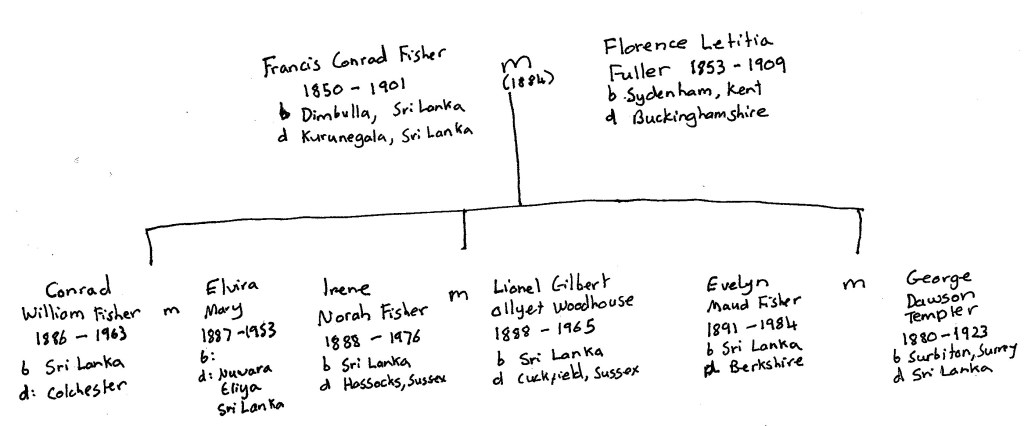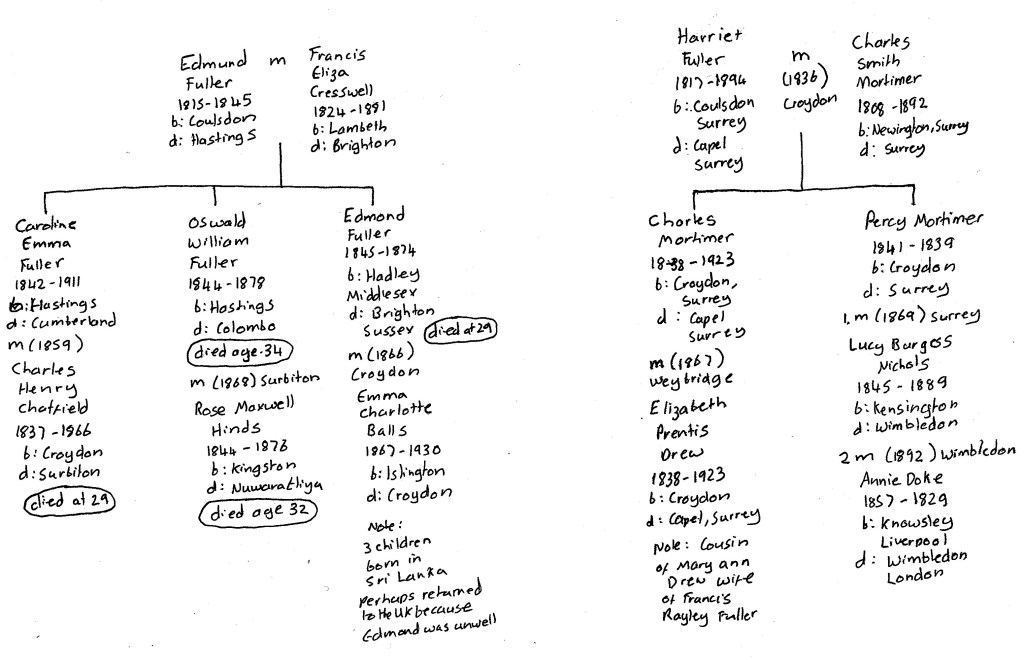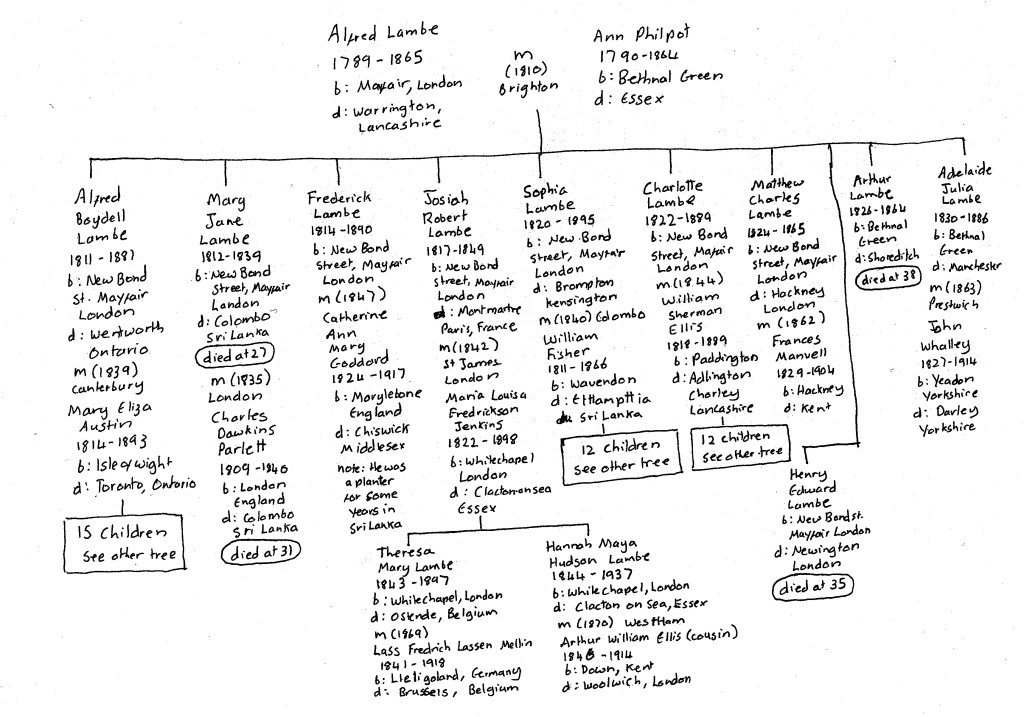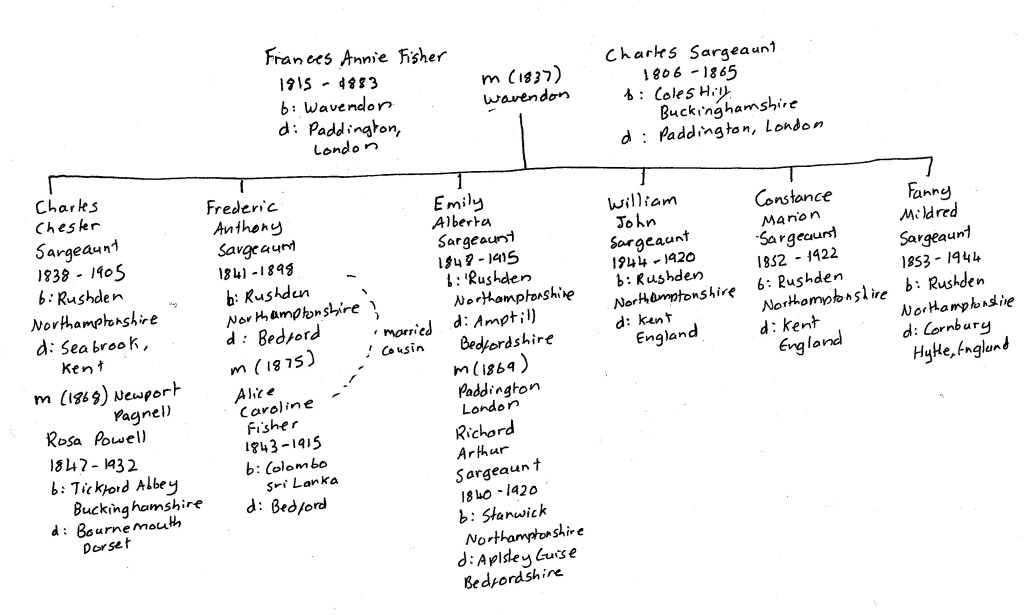Mid 1800’s Ancestors :
South East England and Sri Lanka

DREW AND FULLER (UPPER PART OF THIS PAGE)
STILL UNDER CONSTRUCTION
Fisher and Lambe almost complete
Mary Ann Drew
Born: 10 Nov 1815
Bermondsey, London
Died: 13 December 1904
Hove, Sussex



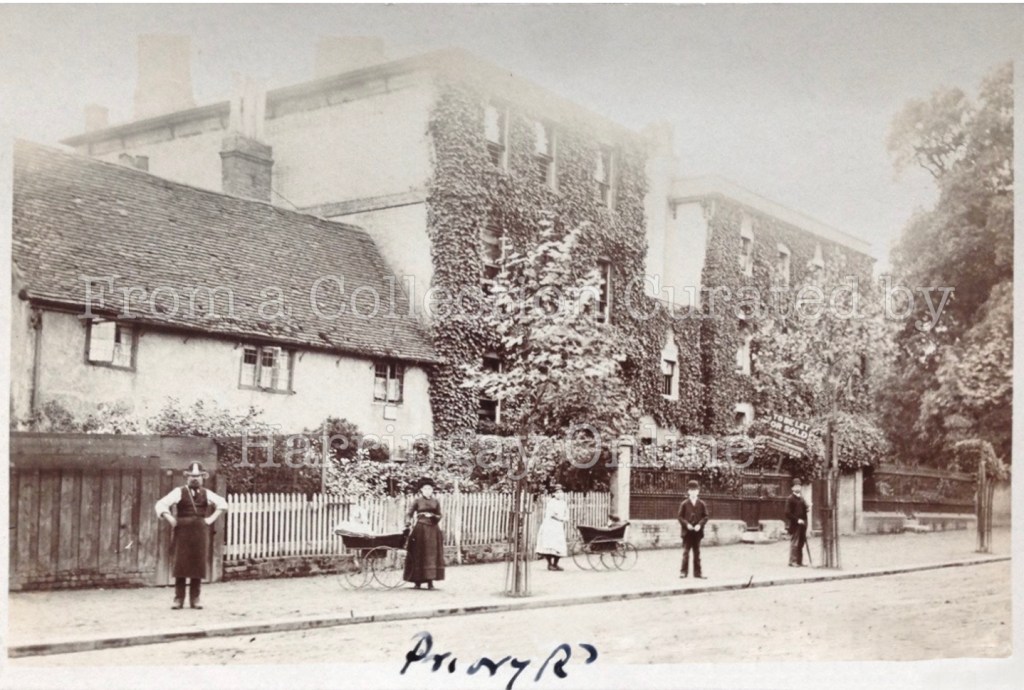

Mary Ann Drew was born in Bermondsey in 1815. She was baptised at St Mary Magdalene church. Her father was a well respected lawyer George Drew in Bermondsey.
Her mother Mary Harvey came from Folkestone where her family had lived for over 300 years. She is probably descended from to Sir Thomas Harvey who was Lord Mayor of Folkestone in the late 1500’s. His son Sir William Harvey was a deep medical thinker/researcher and discovered blood circulation.
Mary Ann was brought up in South London – Streatham and Bermondsey. She was the eldest of 11 children born to the couple.
Mary married Francis in Streatham in 1837 when she was 21. They first lived in Tootling. George Drew (Mary Ann’s father) built Kenley House in Kenley, Surrey in 1845. Francis and Mary Ann took up residence not long after. One of her daughter’s Dora gave a full account of life in the large busy household at Kenley and what a devoted mother Mary Ann was. As she describes she took the role of motherhood very seriously and would come to the nursery to oversee what was happening at many points in the day.
The couple had 14 children. And although they were sent off to boarding school from the age of 7 the number of children probably meant that she was pretty busy for a considerable period of her life just managing the family and their homes and entertaining a great deal.
Typical family life in the Fuller home consisted of church every Sunday, prayers in the dining room each morning and children’s hour with their parents every evening from 6 until 7. Francis had a great love for English Literature art and languages with all the children learning French and German. Music was also an import part of family life with musical evening in the home. All the girls learnt to sing and play musical instruments.
By 1881 they had moved to the Glens whilst Francis was overseeing the Alexandra Palace project.
Francis went through a bankruptcy and after that the family moved to Hove in 1882.
Francis died in 1887. Mary Ann lived for another 17 years. Her daughter Eleanor Smiles came to live with her.
Mary Ann died in Hove in 1904 the same year as her daughter Florence. Eleanor was present at the time of her death.




Thanks to the many descendents of
See match summary

Francis Rayley Fuller
Born: 29 JUN 1807
Coulsdon, Surrey
Died: 27 MAY 1887
Hove, Sussex



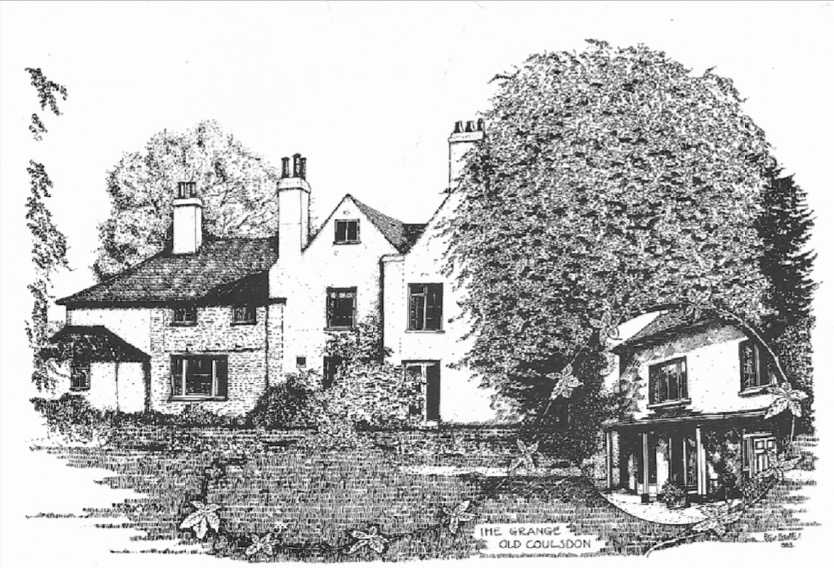
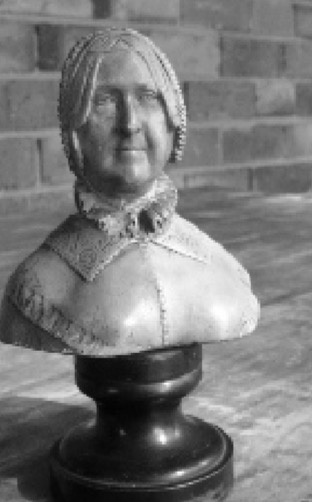


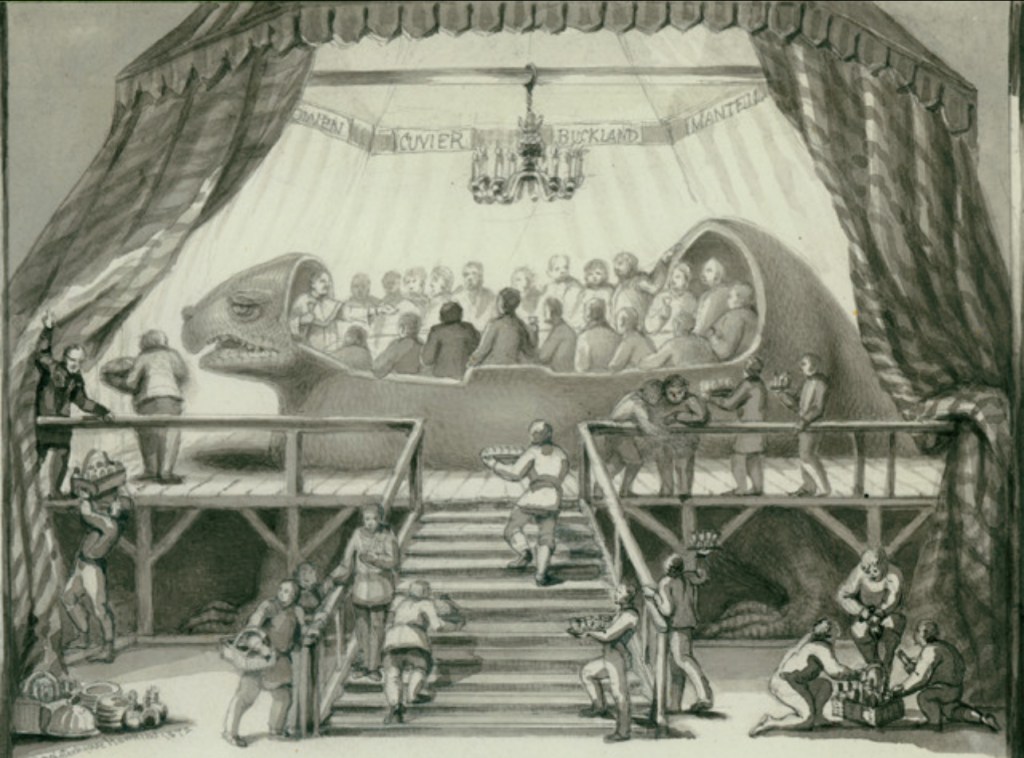
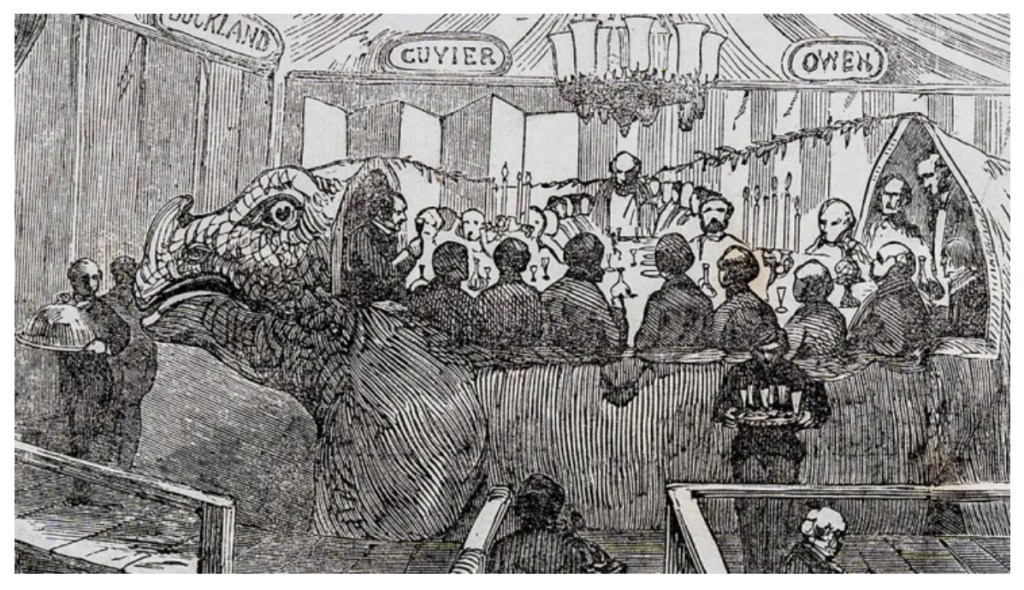
Francis Rayley Fuller was born and brought up in the village of Coulsdon not far from Croydon.
His father was a substantial farmer and tenant of Thomas Bryon Esquire. He was also a qualified land surveyor and assessor. In 1804 records show that he was farming 400 of the 500 acres in his tenancy with crops of wheat, oats, barley and peas.
His mother Sarah Sayer Hitchins was the daughter of an accredited paint stainer. She was brought up at a number of addresses in Surrey and Kent. And was the 4th of 10 children.
John and Sarah settled at Coulsdon Court Farmhouse which became known as Court Lodge (now known as the Grange).
Francis was born in June 1807 and was baptised at St John the Evangelist church in Coulsdon. He was educated at Isleworth until he was 14 before training as a farmer.
When he was thirty he married Mary Ann Drew. Francis was a friend of Mary Ann’s father.
Francis worked as a surveyor in Croydon and in 1847 he joined the agricultural committee for the Society of Arts. Not long after he was involved in determining whether the Society of Arts could feasibly stage an international exhibition similar to one that was being held in France. George Drew was also a member of this committe. In June 1849 he travelled to Paris with the Architect Digby Wyatt and a civil servant Henry Cole to examine the exhibiiton of French Works of Art and Manufacture.
On his way back from Paris he bumped into Thomas Cubitt (who was the father of his aunt) the architect who was building Osbourne house for Prince Albert. As they travelled to London together Franicis suggested the possibility of a much grander exhibition. A couple of days later Cubitt mentioned it to the Prince who expressed an interest.
What followed was a flurry of meetings about the potential idea. The Prime minister, Sir Russell Peel was not initially keen because he did not feel that the manufacturers had been involved. So Francis funded an approach to every single manufacturer in the country. He also was the largest private investor in the exhibition investing some £ 20,000 of his own money.
Francis was intimately involved in comissioning exhibits like the first ever models of dinosaurs. Famously he attended a dinner inside the model of one of the dinosaurs. This was an excellent Public Relations exercise for the exhibition.

The Great Exhibiton
I am grateful for this comprehensive account of the lead up to the great exhibition put together by Jane Kovac of Australia. I have not managed to get in touch with her to ask if I can share it. However since most of this is a matter of public record I have assumed she will be ok with this.





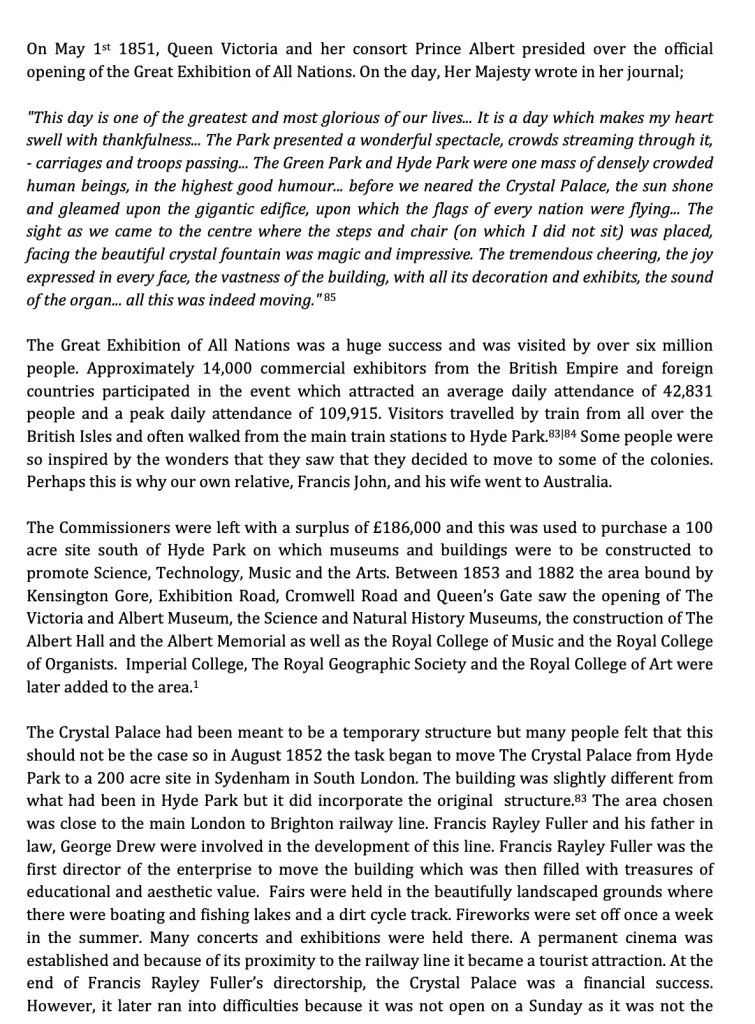

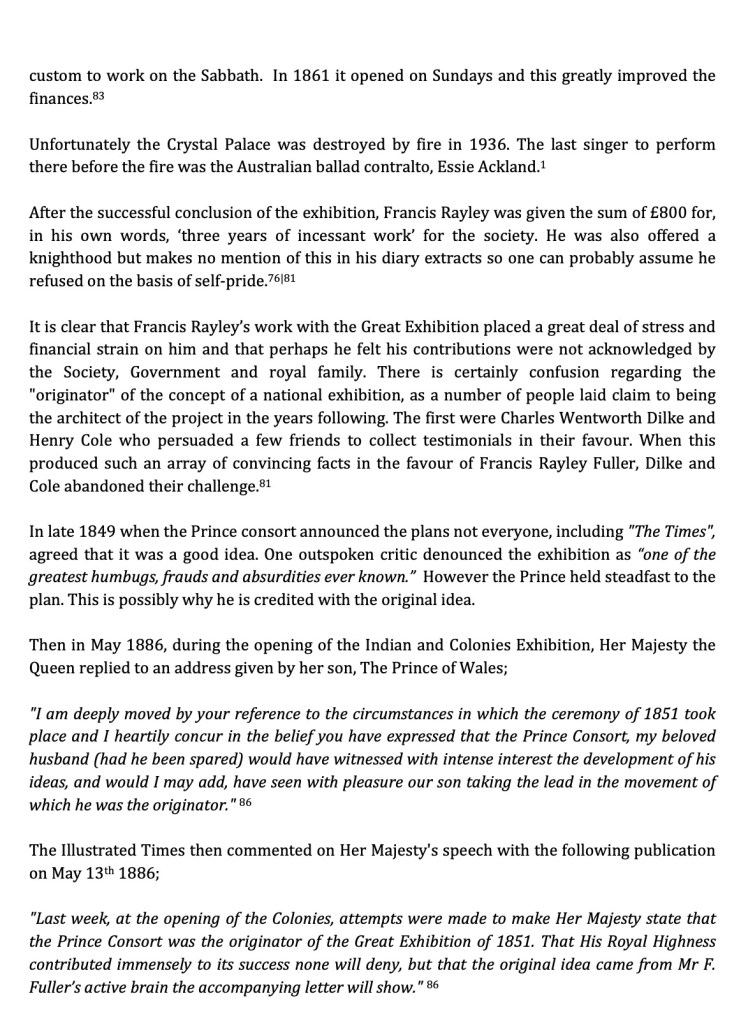


Thanks to the
See match summary
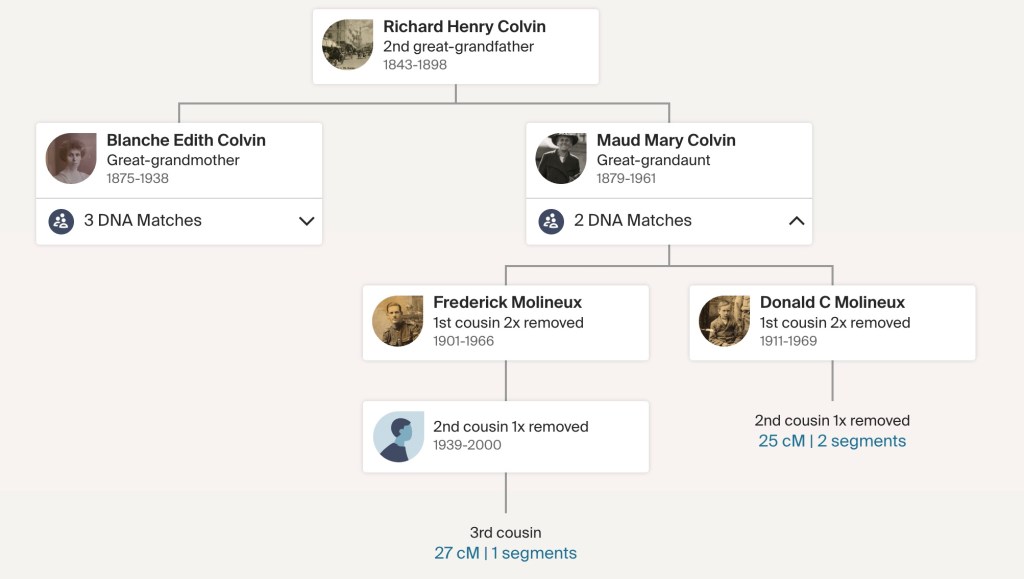
Sophia Lambe
Born: 1820
New Bond Street, London
Died: 23 Jan 1895
Kensington, London
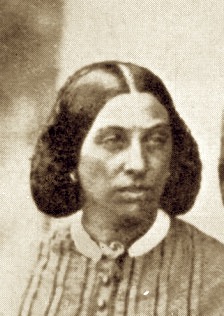

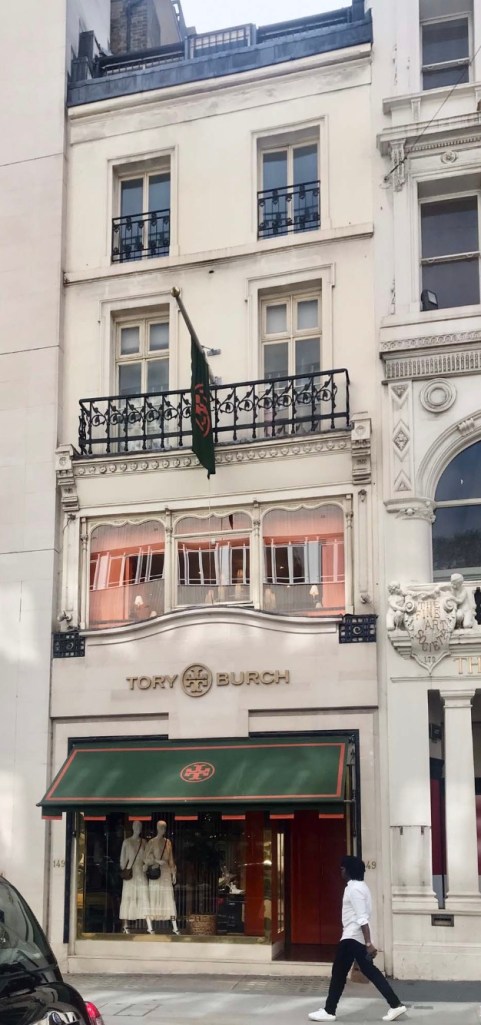
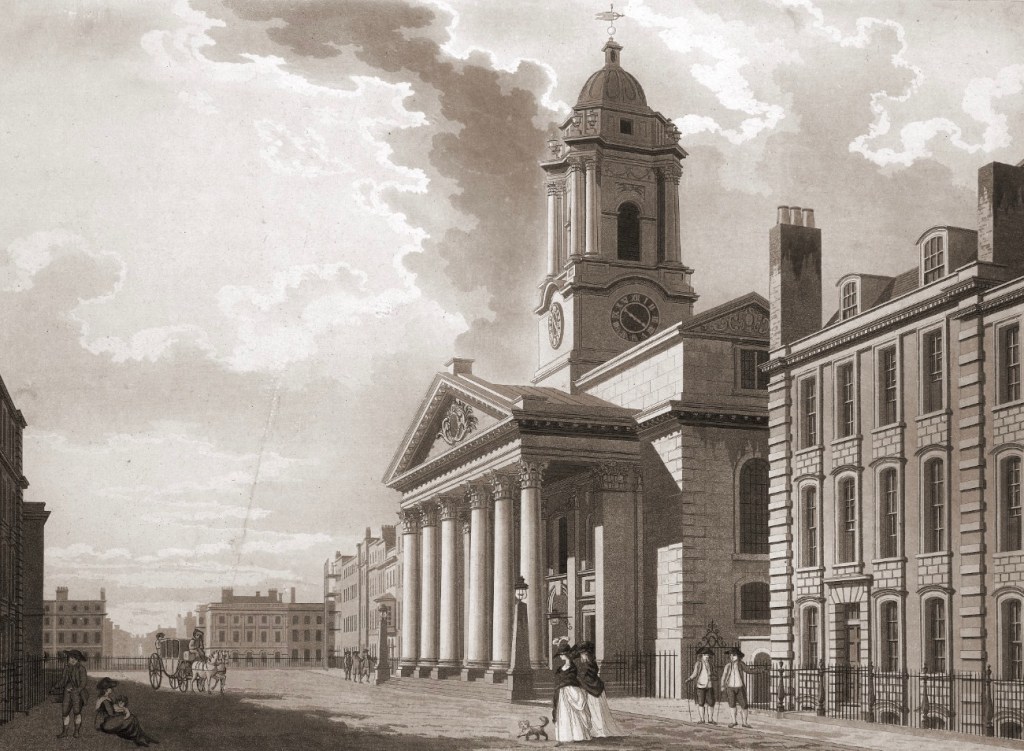


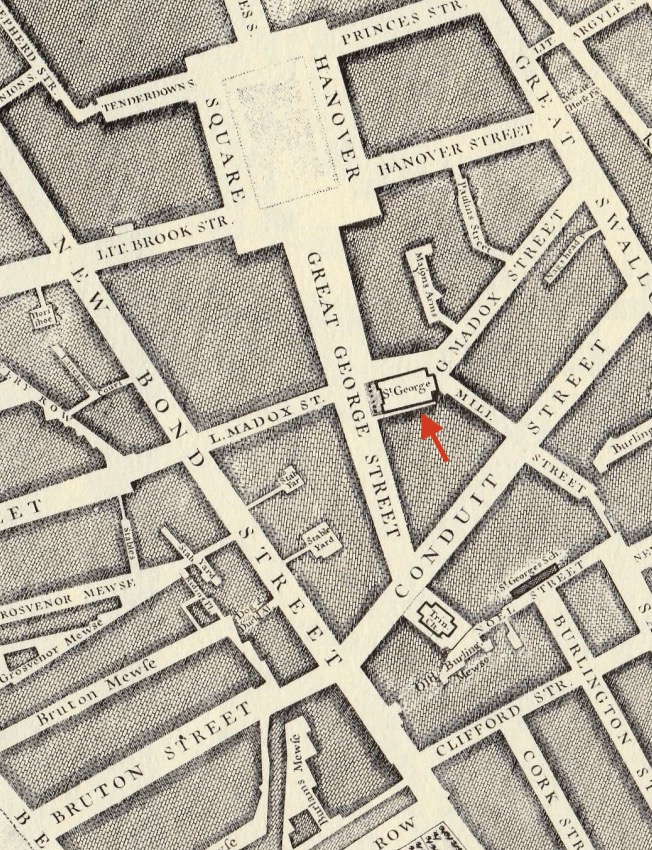

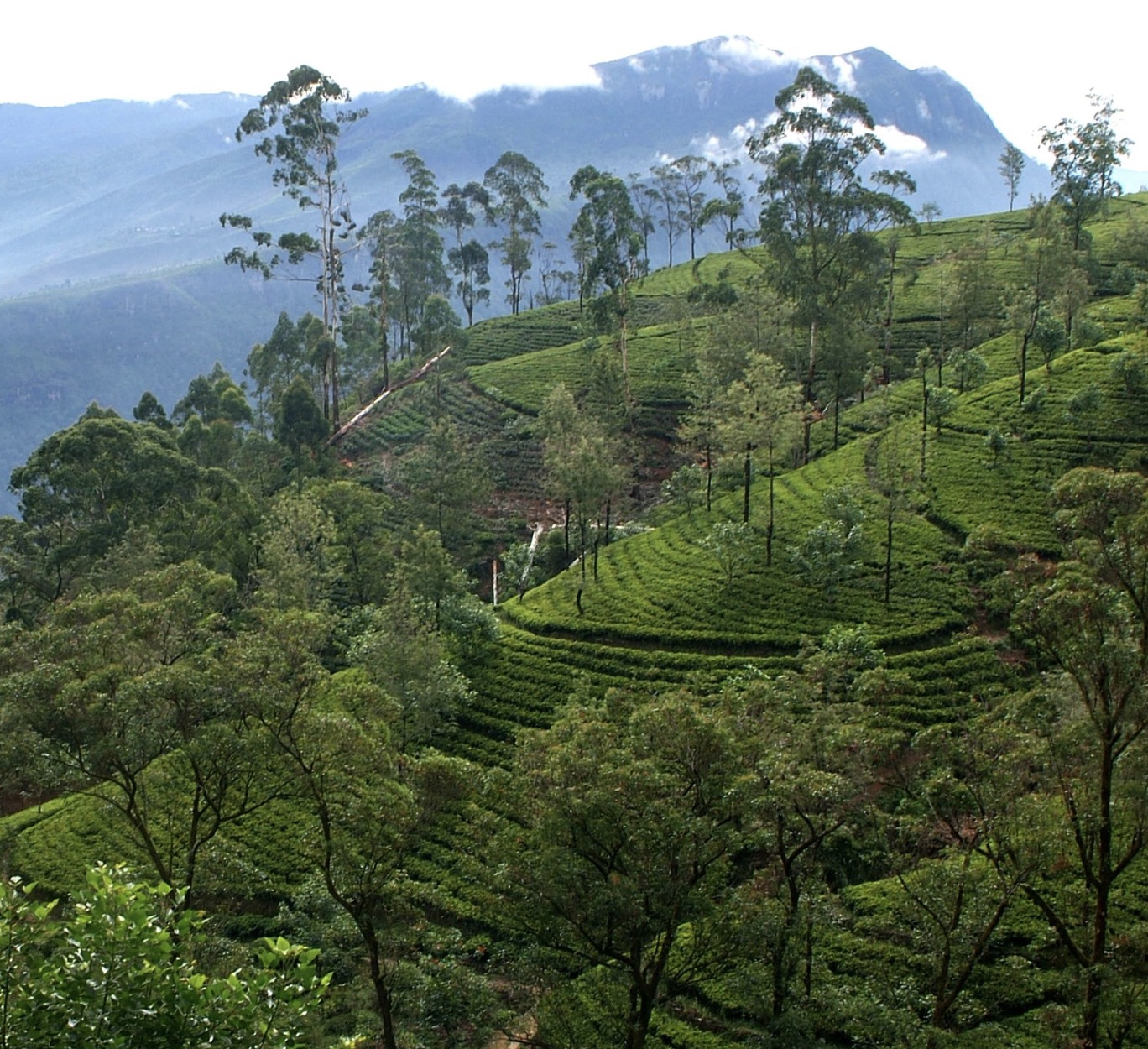


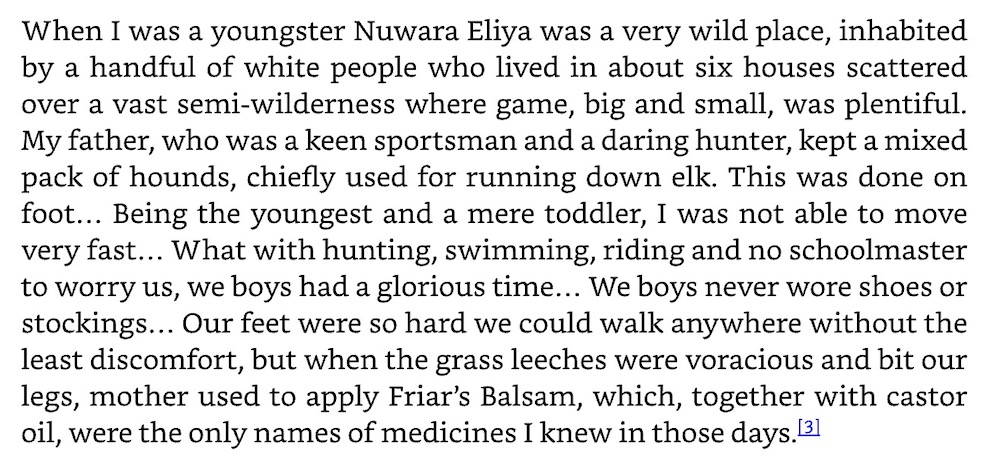



Sophia Lambe was born in upmarket Mayfair, London in 1820. Her father Albert Lambe was a Wine Merchant or Vintner and a Purveyor of Mineral Water to the King at 149 New Bond Street. He had taken over from his father John Lambe who had started the business at 153 New Bond Street around 1775. When Albert’s father John died in 1808 his mother Mary was in charge of the business until she also died in 1827.
Her mother, Ann Philpot was born in Bethnal green and was the daughter of a Shoemaker (or Cordwainer).
Sophia’s great uncle John Boydell, a well know engraver, artist and publisher had been Lord Mayor of London.
Albert and Ann had a large family most of whom were born while they were in New Bond Street. Unfortunately Albert was only in charge of the business for 10 years after his mother died before it went bankrupt in 1837.
Probably in part triggered by her father’s financial misfortunes Sophia went out to Sri Lanka in 1838, aged 18, on the “Africa” under Captain Skelton. Also on board were Mr and Mrs Charles Delegal and Dr G. Rumley. The purpose of the trip was to keep house for her brother Frederick Lambe who was out there working as an agent for the new coffee plantations. There was a shortage of European women in Sri Lanka. So it was a good place to find a husband. A number of women in my family went out to Sri Lanka to help their brothers and then married some of the soldiers, civil servants or planters stationed out there.
Sophia’s older sister Mary Jane had already sucessfully married a planter from Sri Lanka. So when she went there she would have had two siblings to keep her company when se arrived. Sadly Mary Jane died the following year.
Sophia was an acknowledged belle in Colombo. She met and married William Fisher in 1840 in Colombo. Jack Fisher reported in his autobiography ” There was never such a healthy couple as my father and mother. They never married for money – they married for love “.
Shortly after they married William bought himself out of his army career and went into the Coffee plantation business. Not long after that their eldest son John Arthbuthnot Fisher was born on the Wavendon coffee plantation in 1841. His middle name was after after Robert Arbuthnot Chief Secretary of Ceylon. The couple chose Lady Anne Beatrix Horton to be Jack’s godmother which was to prove provident.
A daughter Alice followed. And then tragically the next two children died. Frederick Fisher describes the fairly wild and free childhood that was afforded the children living on the coffee plantation with lots of animals, riding and hunting and no schoolmaster.
In about 1847 it was to decided to send the eldest son John (or Jack) back to england with his uncle Frederick Lambe. He was supposedly going to live with his Fisher grandfather. Unfortunately that grandfather died unexpectedly.
So he went to live with his maternal grandparents Albert and Ann Lambe in Bethnal Green who were struggling somewhat. His grandparents were taking in paying lodgers to make ends meet and Jack Fisher speaks of very hard times there before he was sent off to boarding school in Coventry. Whilst at the school he would be taken on breaks by his wealthy godmother at Catton hall who later managed to get him his first role in the Navy. From which he rose to great things.
Eventually all 7 surviving children came over to England to study. It must have been hard for Sophia to send them such a long way away. Frederick Fisher gives an account of how much he disliked his school in Lichfield where he, Frank (Francis Conrad) and Albert went.
The picture of the siblings is taken in 1865 a year before their father died. We know that Frank had returned to Sri Lanka by 1866 as he started a job in the Civil service. In that same year Sophia lost her husband in an accident. Tragically their daughter Alice who was also living in Sri Lanka at that time lost three children to cholera in the course of a week also in 1861. This was probably the worst year for the Fishers as a family. Alice and her husband returned to Europe the following year
It appears that Sophia stayed in Sri Lanka for quite some time after her husbands death . Arthur followed his brother into the Civil Service in 1868. Her daughter Lucy Ellen married in St Peters Church Colombo in 1869. Arthur married Katherine Dunlop in Jaffna.
In 1872 Jack Fisher stopped in at Trincolamee on his boat “Ocean”. It was the first time his mother had seen her eldest child since he was 6 years old 26 years before. Sophia was now a widow of 52 years old. Jack writes about meeting Frank to his wife at this time he said:

Arthur Fisher had a young family in the mid to late 1870’s which was perhaps a pleasure for Sophia. By this point he was working for the Pioneers building infrastructure on the island. Frank was also doing well in the Civil Service. Sadly Arthur died in 1883 at Batticaloa aged just 35. His young family moved to Australia the following year.
Frank married in 1884 and brought his wife Florence back to Sri Lanka to live. They started a family in 1886 with the arrival of Conrad.
We don’t know when Sophia moved back to England but by 1891 she was living in South Kensington as a lodger. By this point she had quite a difficult relationship with Jack Fisher who she relied upon somewhat for money. Her daughter Alice lived in York in 1891. And Frederic was away on ships in the Navy. Lucy Ellen was living in Ireland. It may well have been pretty lonely for Sophia.
In 1894 she heard that her second daughter Lucy Ellen had died on board the ship the Numidian on her way to Halifax, Canada. This meant she had now been predeceased by her husband and 8 of her children. She died herself the following year. Quite a sad end to a tough life.
Richard Hough Jack Fisher’s authorised biographer said “it was certainly from his mother that Fisher inherited his vigour, vitality, tenacity and sharp intellect… a naval correspondent wrote of Sophie Fisher that “she was no ordinary woman. She was strong with a moral courage that she has given to her son, and her powerful mind, organizing capacity and taste for power, are characteristics she faithfully reproduced in her family”. What more is there to say.


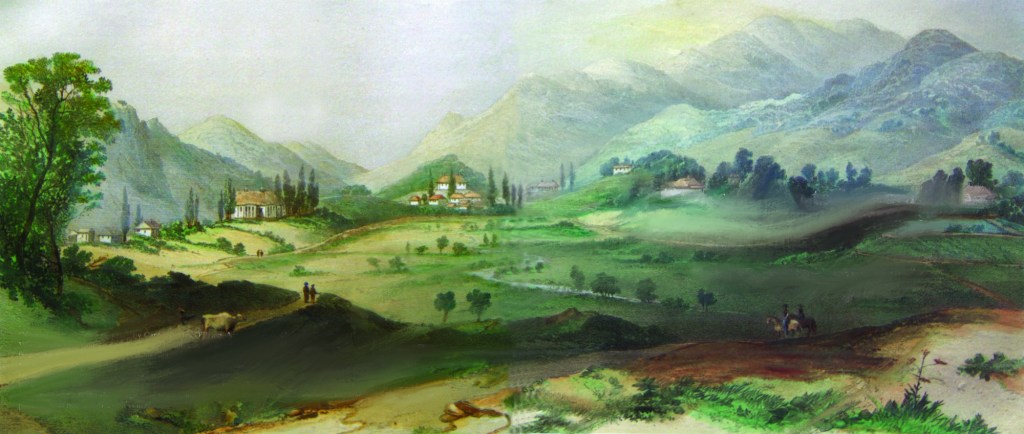

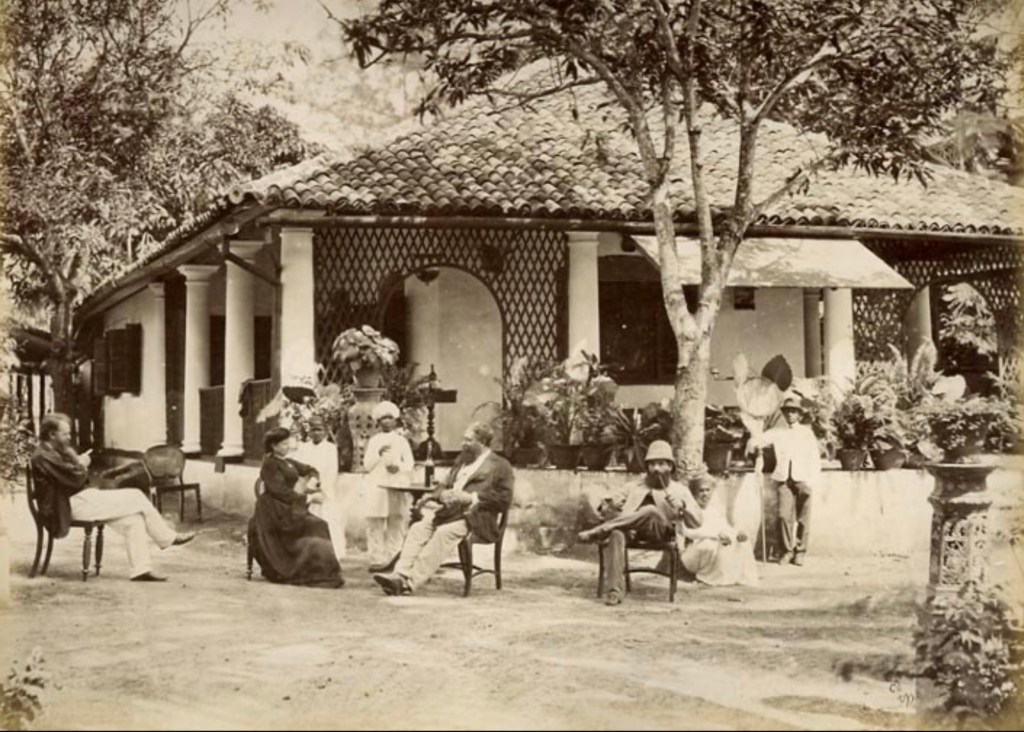
http://www.imagesofceylon.com
History of 149 New Bond Street – From Wine 1800 to Louis Vuitton in 1899
149 New Bond Street was a very good address in Mayfair. It was where all the wealthiest people would come to shop and still is today. Situated half way between Oxford Street and Piccadily it was a prime location. John Lambe first set up business there in the early 1800’s (moving from 153 New Bond Street where he had been operating since 1875). When he died his wife Mary was the business owner. Alfred took over in 1827 but was Bankrupt by 1837 at which point his son took over but was out of the bussines by the early 1850’s.
Louis Vuiton went on to moved to this address in 1900.
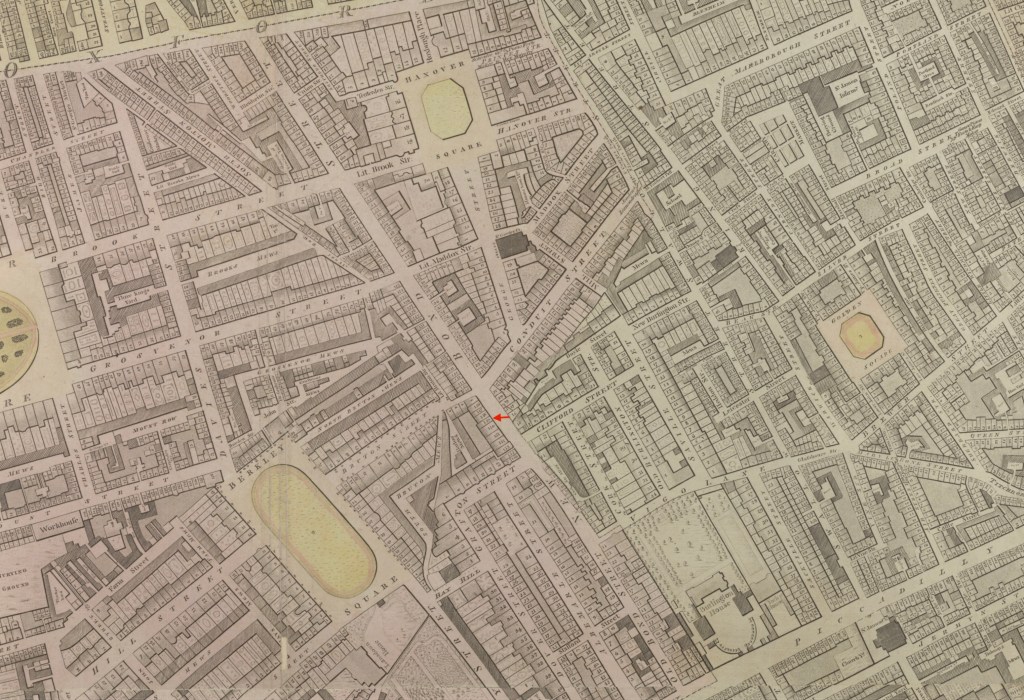




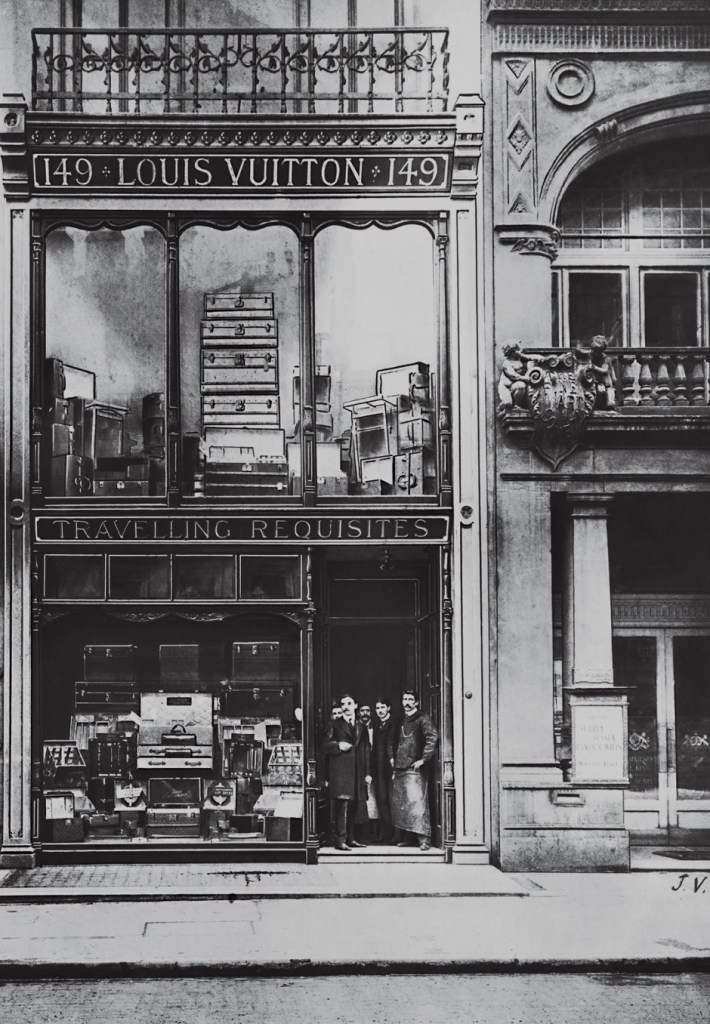

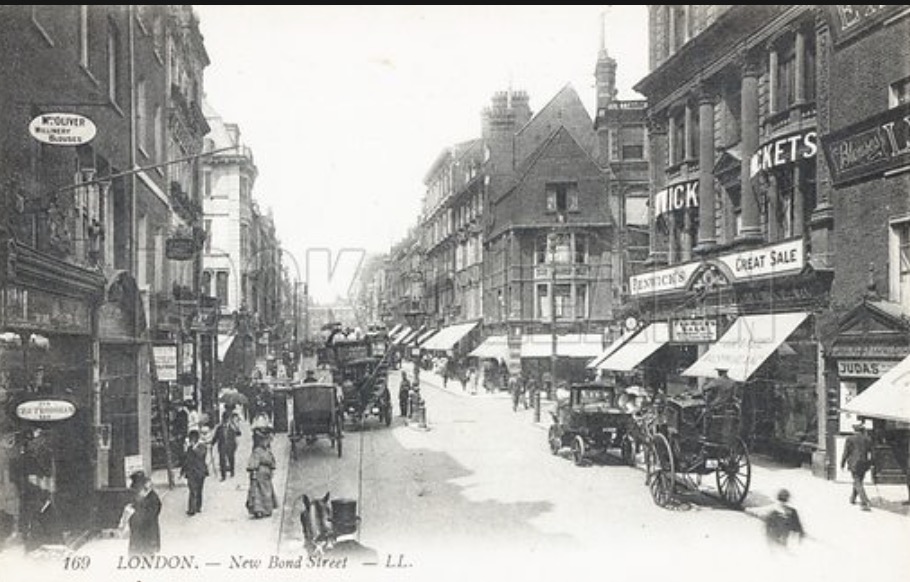

Alfred Boydell Lambe – 149 Bond Street, Mayfair Merchant





In 1870 Alfred Boydell Lambe and most of his family moved to Canada

Mary Jane Lambe – went to Sri Lanka

Mary Jane Lambe married Charles Dawkins Parlett in 1834.
They went out to Sri Lanka
Charles worked for the Ceylon Legislative council
Her sister Sophia arrived in Sri Lanka in 1838 to live with her brother Frederick.
Sadly Mary Jane died in 1839 in Sri Lanka and her husband died the following year in 1840.
Frederick Lambe – Ceylon Agent (Imports to Ceylon and Coffee)
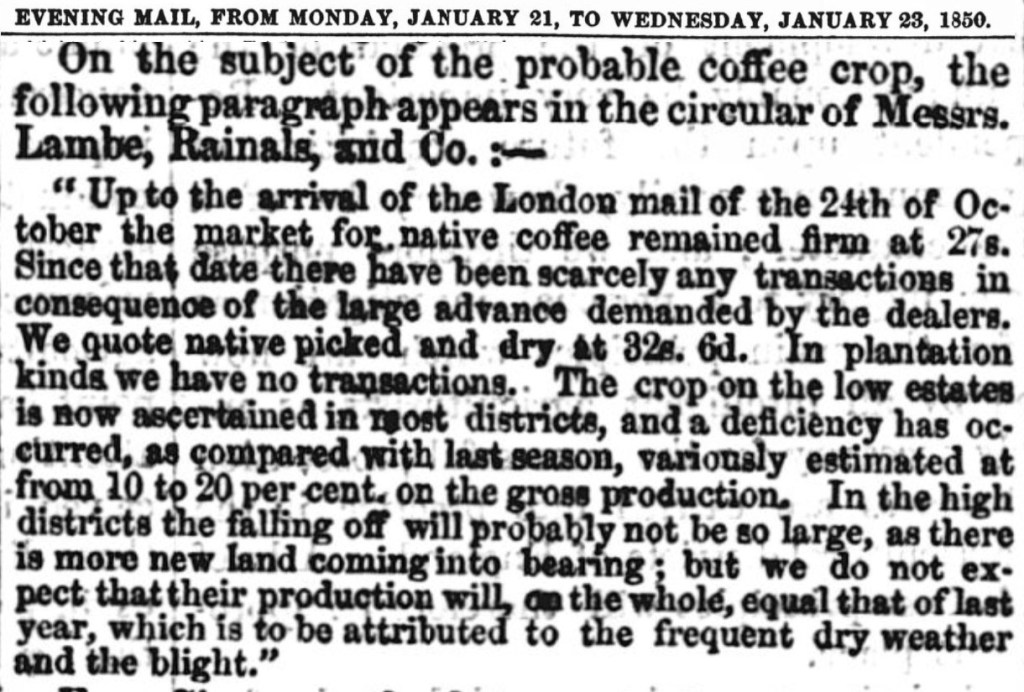

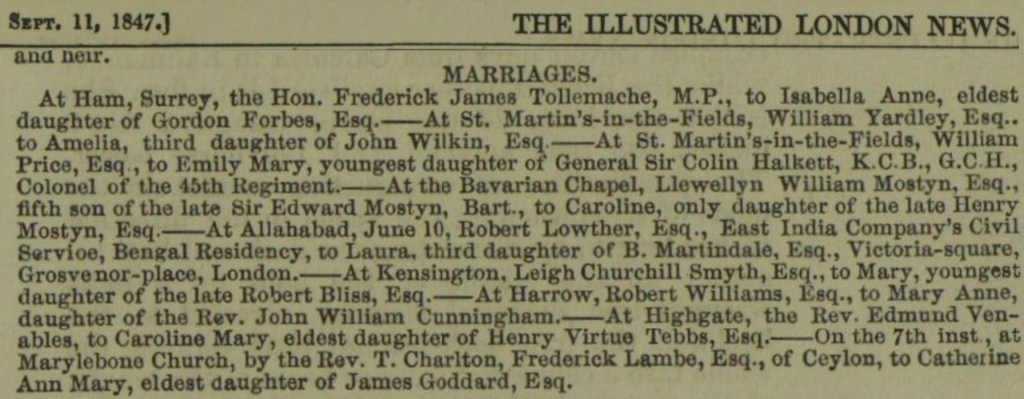
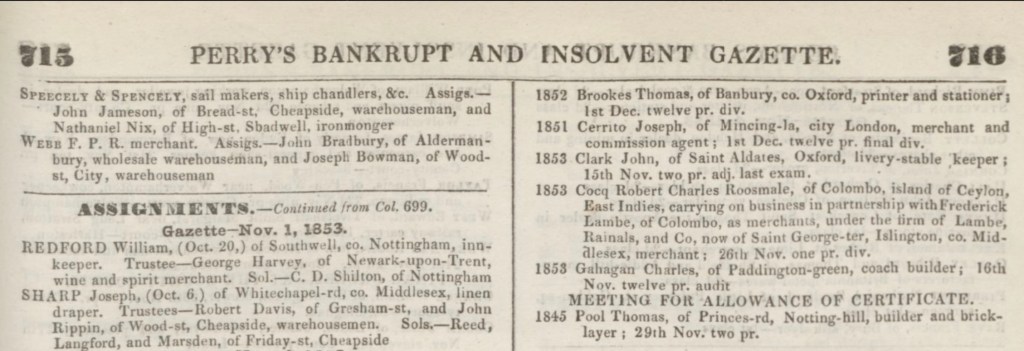
Clear Frederick then did business in London and Canada

Thanks to all my matches mainly to Alfred Boydell Lambe and to Arthur Fisher
See match summary
William Fisher
Born: 2 Feb 1811
Wavendon, Buckinghamshire
Died: 5 May 1866
Nuwara Eliya, Sri Lanka
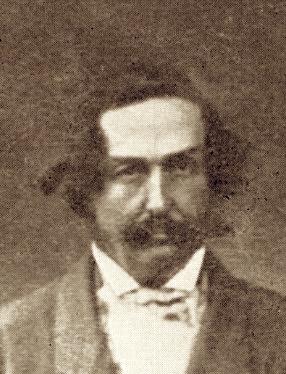



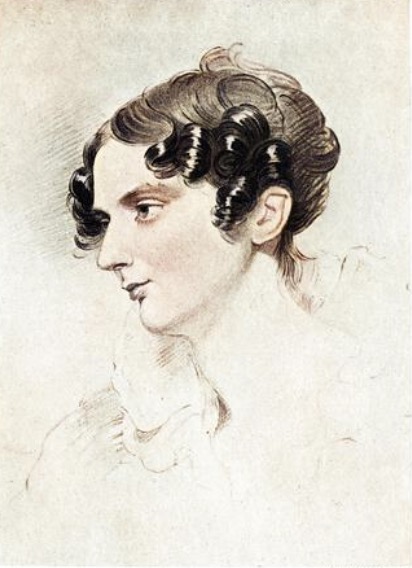
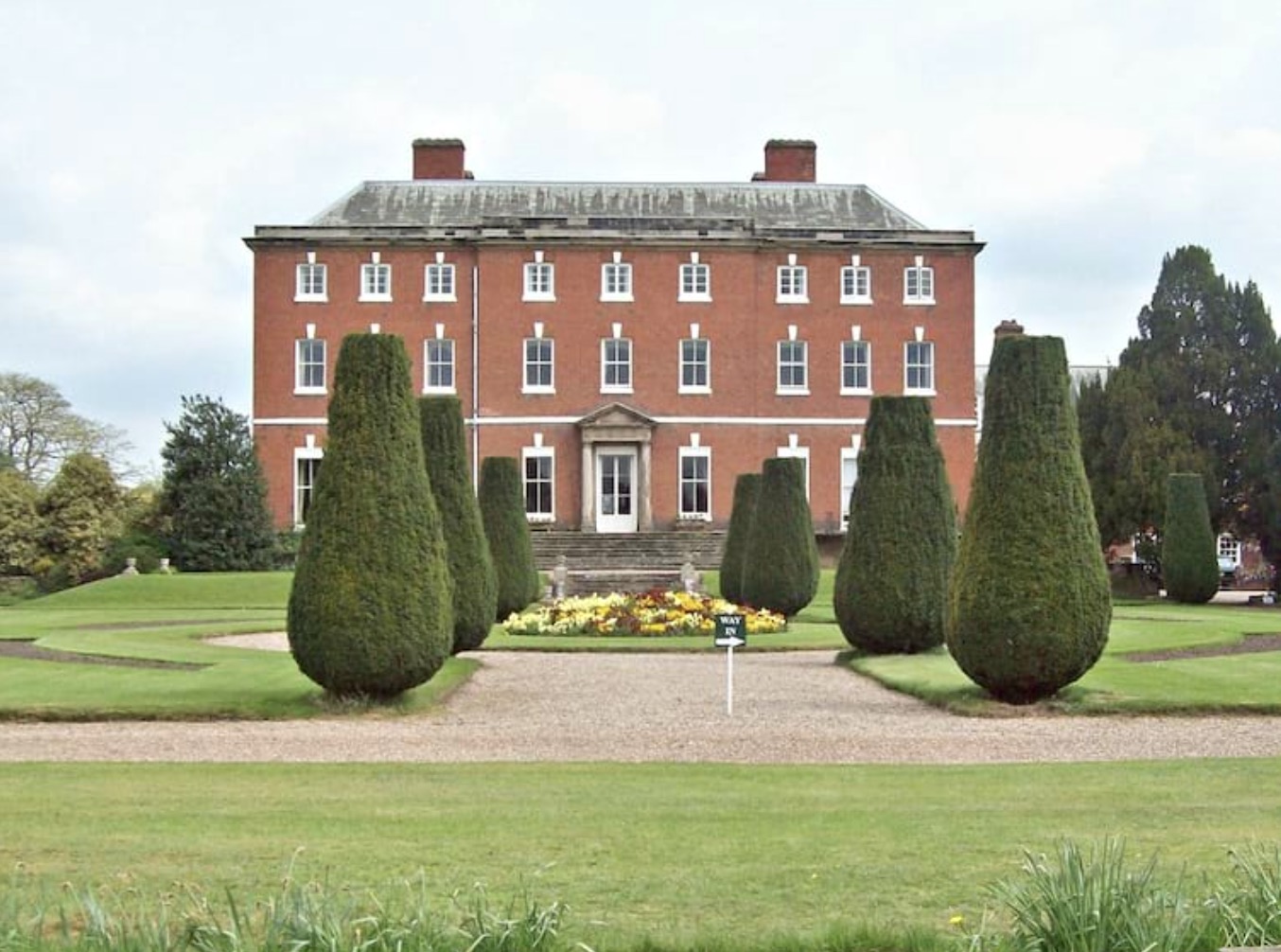

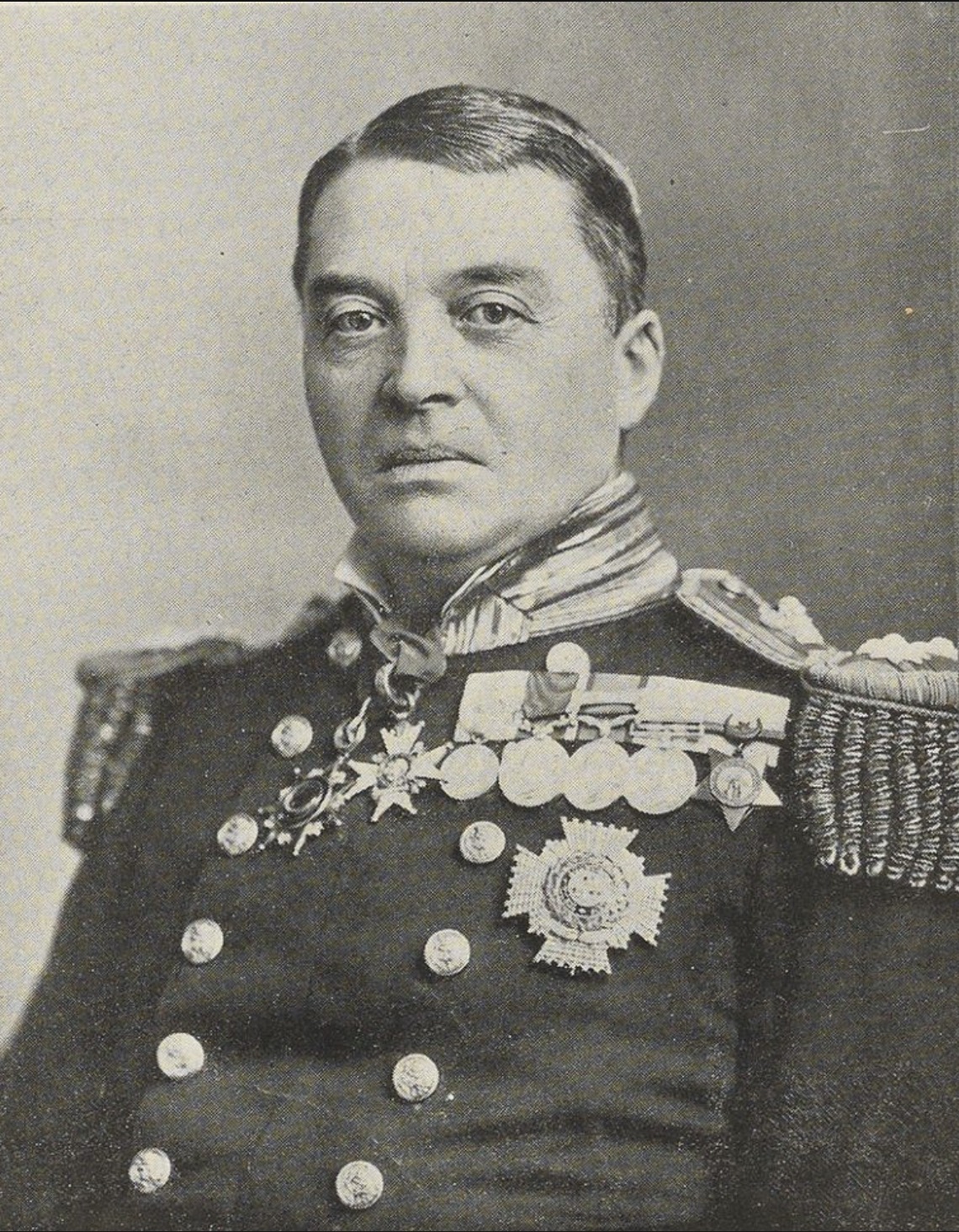
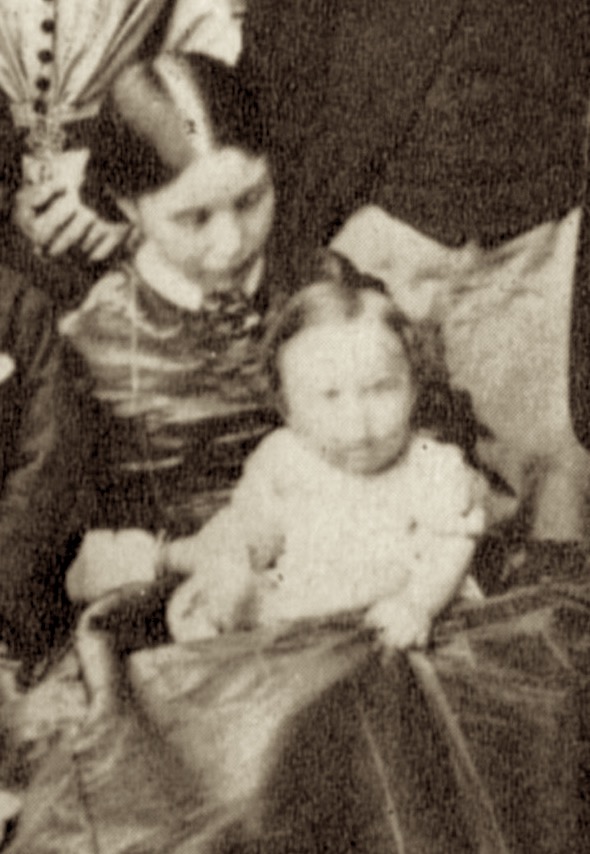

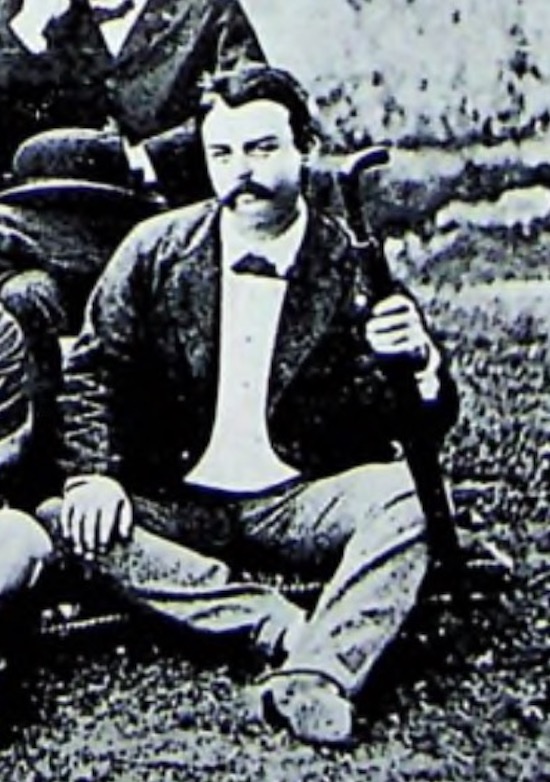

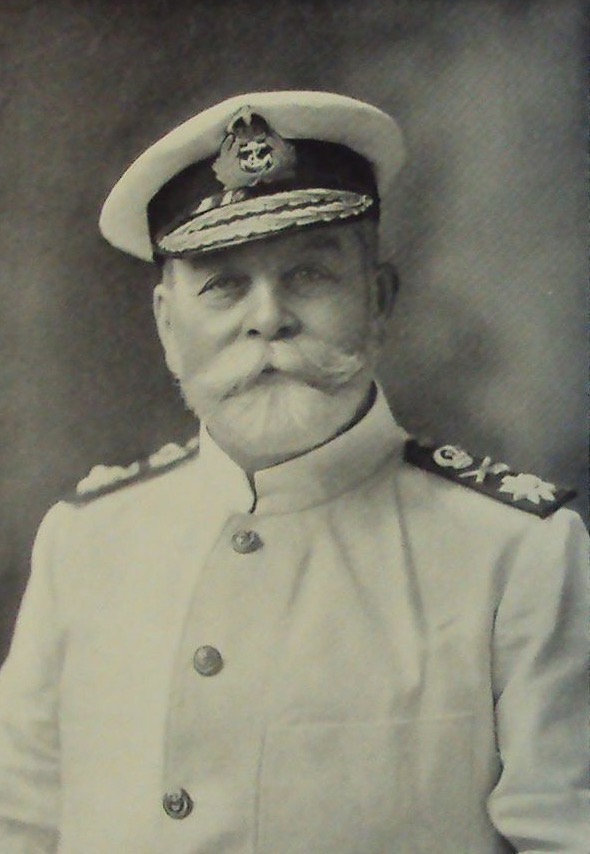
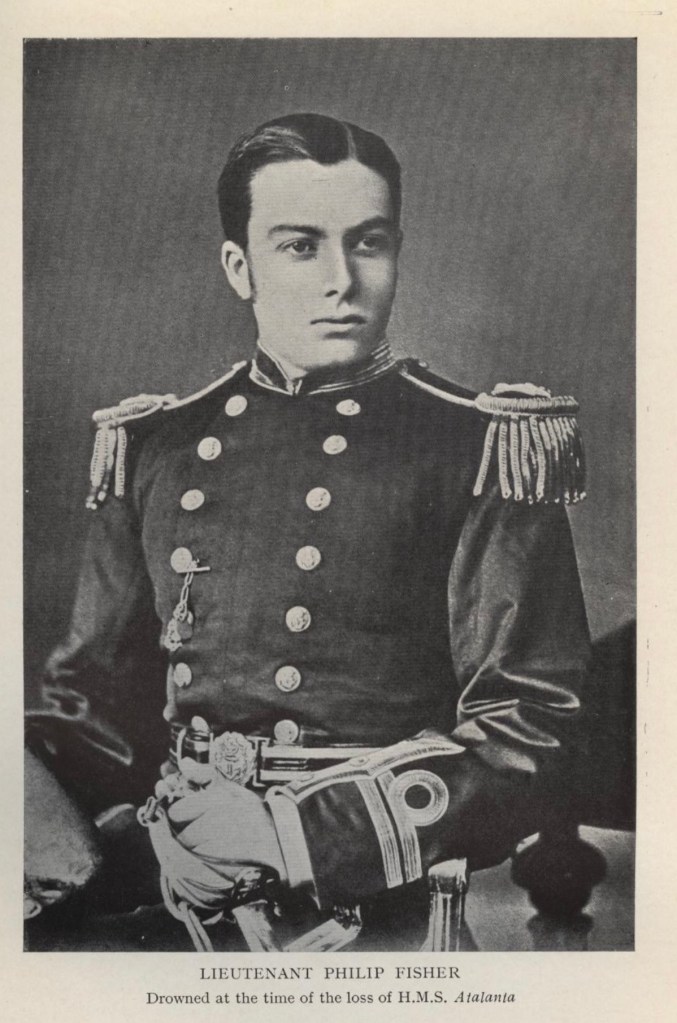
William Fisher was born at Wavendon, Buckinghamshire where his father was a vicar.
Reverand John Fisher was born in Bodmin, Cornwall and came from a line a vicars based in that area. He married Caroline Lucas in Newport Pagnell Bucks and is recorded as being a clerk (or clergy). It also mentions Wavendon. Caroline was born in Buckinghamshire but both her parents were from Shropshire.
William’s uncle had been mortally wounded at Waterloo alongside the Duke of Wellington. His dying wish was that his young Nephew, Wiliam would be granted a commission. So he sailed out to Sri Lanka in 1831 in the ship Morley as an enisgn in command of the Governor’s Guard with the 78th Highland Regiment.
The Governor of Ceylon at the time was Robert Wilmot-Horton who quickly appointed him as his Aide-de-camp (ADC) or personal secretary. There is a story that William was involved in saving Wilmot-Hortons sons life but the details are no longer with us. Whatever the reason the family had a strong link. Lady Horton was made Williams eldest childs godparent. And she took an interest in all the children when they were later schooling in england.
William was a keen hunter and on March 28th 1834 while Elk hunting with Captain Albert Watson in the central part of Ceylon they came across what the two of them decided to call “Horton Plains”. This was later to become a key plantation area. In 1835 he was secretary and treasurer of the Nuwara Eliya Hunt.
When he was 29 he fell in love with Sophia Lambe and married her in 1940. As Jack Fisher put it his father was “very young, also especially handsome and equally unmindful of worldly advantages in satisfying the desires of his heart, for my mother had only beauty and he had only his splendid body”.
He was Staff Officer, Kandy in 1841 and 1842 and at Colombo until 1847 when he bought himself out of army. His father had just died at this point so perhaps he inherited a small sum.
At any rate he was tempted (perhaps by his agent brother in law) to start a coffee plantation himself at Nuwara Eliya. He is associated mainly with three planatations. The main one being at Wavendon at Ramboda named after the village in england where he was born. Then also Dambagastalawa in Kotmale,and Raglan in Kurunegegala.
Unfortunately it did not go well and he started to go into debt. This was not due to the Coffee Rust or blight which impacted all coffee grown in the region a little later (about 1869 onwards). For William things probably started to go pear shaped because there was a massive downturn in the British economy in 1847 and the price of coffee reduced considerably. This put many people out of business including Frederick Lambe Sophia’s brother.
As Woolf says in his book “Growing” there were three groups within British society in Sri Lanka at that time: The Army, The Planters and the Civil Servants. William now made a move into the Civil Service taking on a Role in the Police Service at Kandy in order to raise more funds. He must have been one of few British who was part of all three communities at different points in his life. Joining the Civil service was to be a path for two of his sons and two of his grand-daughters also married men from the Ceylon Civil Service.
Despite an increasing level of pay Fisher seems to have remained fairly in debt well into the 1860’s. A letter to Jack talks about how litte money they had in 1854. Jack Fisher would send them money from England from his meagre salary from very early in his career. In a poignant letter to a friend “Peg” in 1862 he states that he will never be able to go home and mentions concerns that the role he has at the police service was only temporary.
His words were rather alarmingly prescient. In 1866 after 35 years living in Sri Lanka escaping all forms of illness, he fell off a horse while carrying out police business. Apparently the horse kicked him in the head and he was killed instantly.
The accident happened about five miles out of Ampittia where Sophia was waiting for him. She had to go and fetch the body home. As shown in the quote from William Digby in the details below some of his children (probably Lucy, Frank and Arthur) had recently arrived home and he was about to receive a large promotion ending his money concerns. `
William was buried at Holy Trinity church, Nuwara Eliya. The inscription on his grave reads” Sacred in the memory of William Fisher, Ceylon Civil Service, late a Captain in the 78th, 58th and 95th Regiments, who was killed on the spot by a fall from his horse at Ettampittia, near Badulla, May 5th 1866, aged 52 years, and was buried in this Churchyard. Aso to the memory of Frederic William Fisher and Wilmot Fisher, who died at Wavendon Estate Rambodde and are buried in the old churchyard of this place. And of Catherine Emily Fisher and Kate Fisher, who died and were buried at Doombegastalave Estate, all infant children of the above and his wife, Sophy fisher”.
I like Richard Hough’s summary of William the best. He says “We are left with the impression that William Fisher was kindly and ineffectual and improvident, and that the main responsibility for the management of the family, through pregnancy after pregnancy, was left to the redoutable Sophie”.


Horton Plains and Hunting


http://www.imagesofceylon.com

http://www.imagesofceylon.com
Coffee in Sri Lanka in 1847
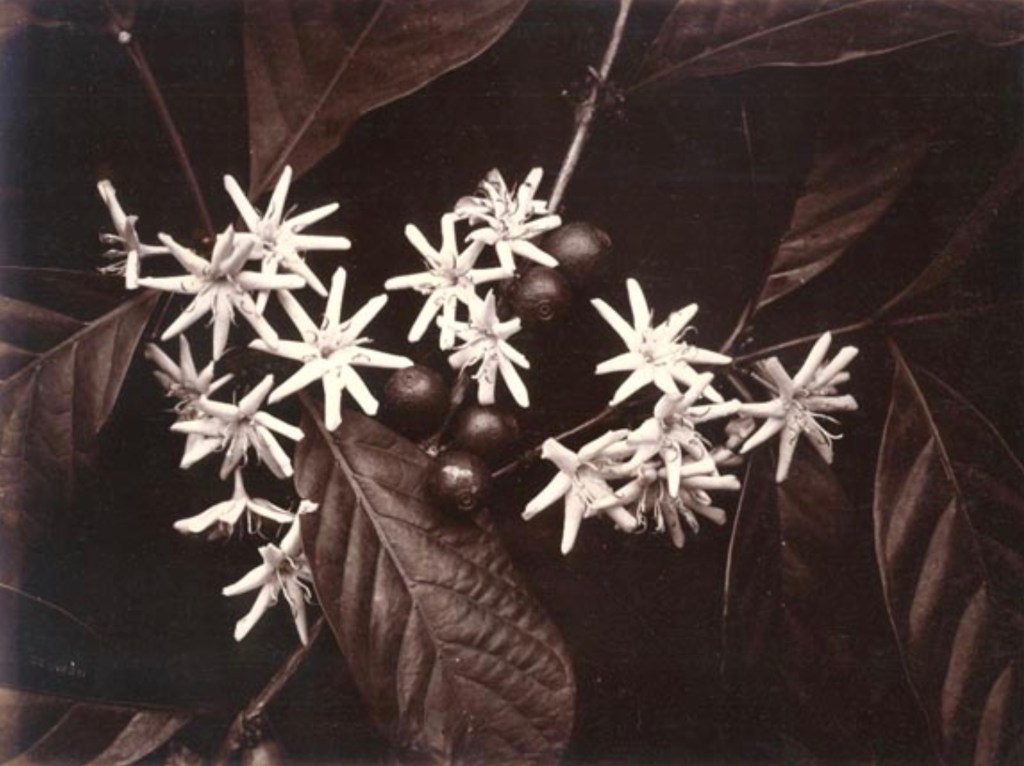
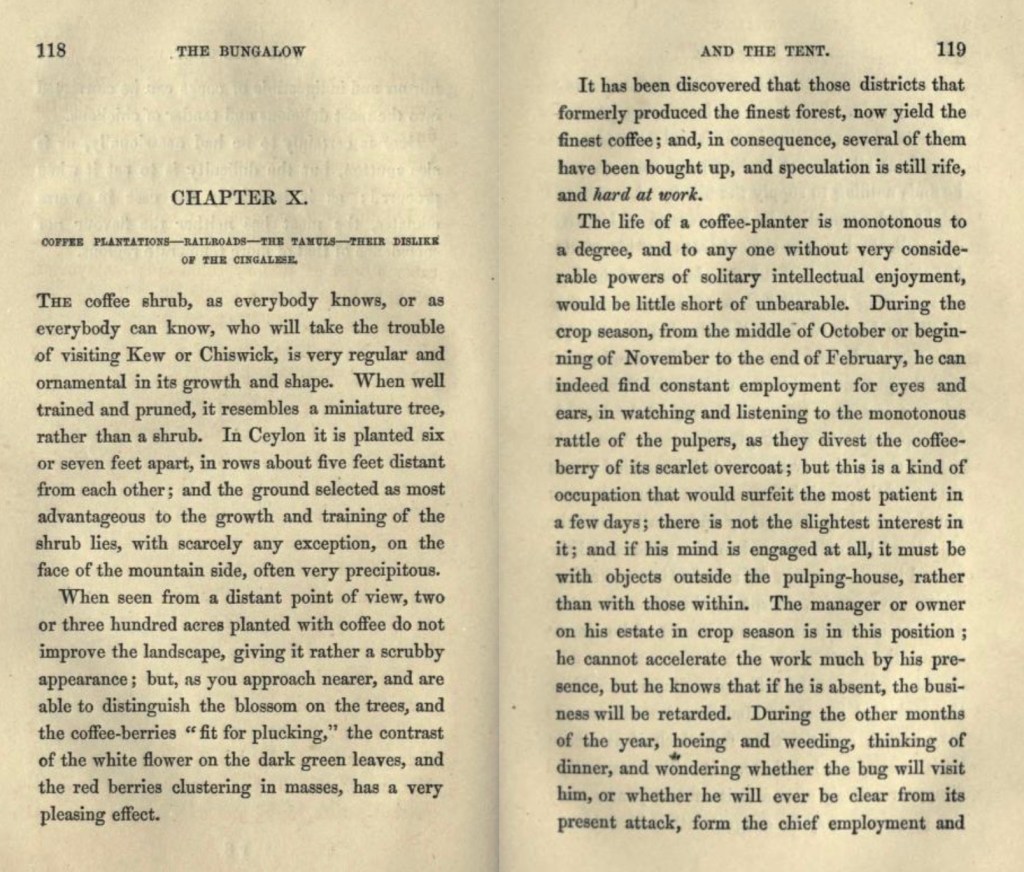







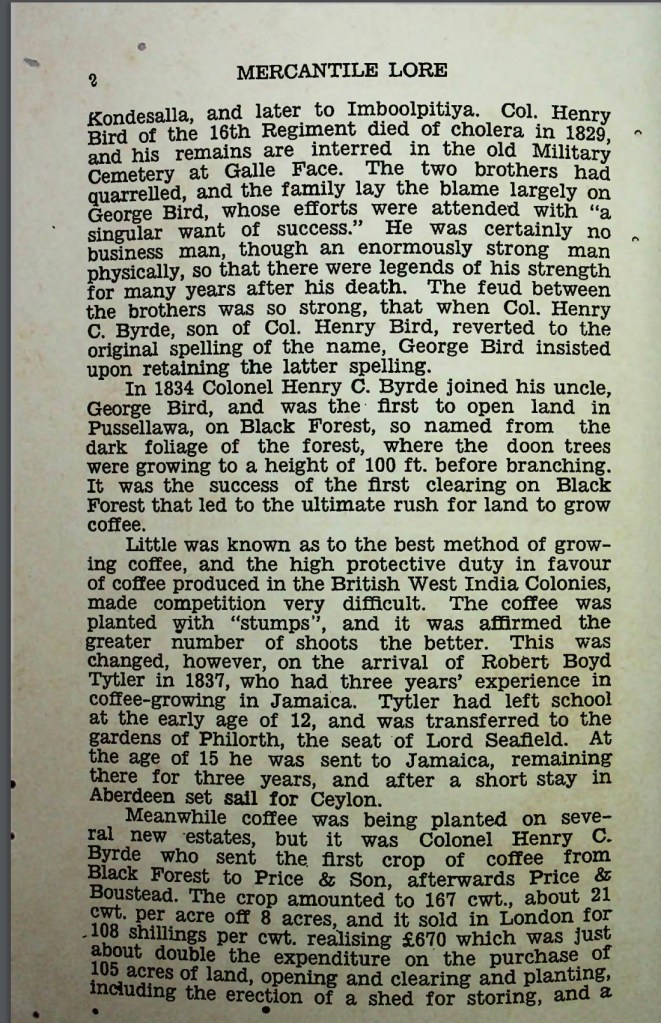


From the Bad taste in your cup of tea
Coffee did not require a fixed labour force. Coffee planters employed local labour, especially for back-breaking work such as clearing and planting. However, for the mundane tasks of fertilising, pruning, and harvesting, itinerant Indian Tamil labour was used. Since work was seasonal, most workers returned home to South India at the end of the harvest.
This gave several planters the opportunity to cheat the workers out of their wages. A Tamil folk song from that time was recorded in 1975 by Valentine Daniel, which seems to indicate that the labourers were being cheated out of their wages by senior civil servants who had taken up large tracts of land for coffee estates.
One such planter, Captain William Fisher (whose son, Admiral Jack Fisher, became First Sea Lord), wrote in The Ceylon Overland Observer of 10 July 1847, boasting how he had played out the labourers he hired to work on Wavendon Estate, Ramboda, hiring new ones in their stead.
It was probably this behaviour which made migrant labour scarce, causing the planters to recruit directly from South India. They used ‘Kanganies’, or labour overseers, to hire labour – most of it consisting of indentured labourers, who had to work until they paid off their debt. As the song recorded by Valentine Daniel says:
“Mr Kankani, Mr Kankani, where is our pay?
O karmam, o karmam, the first half the bugs ate,
The second is paying up the interest you owe.”
And here is the letter that a naive William wrote:


Chapter 11 The Mistress of the Coffee Markets of the World: Slavery in Brazil and the Kangany System in Ceylon, c. 1815–1878
In: Global Agricultural Workers from the 17th to the 21st CenturyAuthor: Rafael Marquese Pages: 293–325 DOI: https://doi.org/10.1163/9789004529427_013
“The prospects for Ceylon’s coffee culture were still uncertain in the aftermath of the deep crisis of 1847–1848. Many estates founded during the investment boom between 1837 and 1845 had been abandoned, confiscated for debt or sold significantly below the original invested value. Based on a careful assessment of the fixed operating costs and average productivity of Ceylon’s plantations, Tytler pointed out how a fluctuation in coffee prices of ten shillings (up or down) could lead to the recovery of the industry or its definitive demise. The remarkably low prices of 1847–1848 were clearly “the natural result of production exceeding consumption.” The crucial information that coffee investors in Ceylon needed, therefore, depended on the perspectives of the world coffee market, which would, in turn, be determined by the expansion or stagnation of supply in the following years. “
Information about Nuwara Eliya


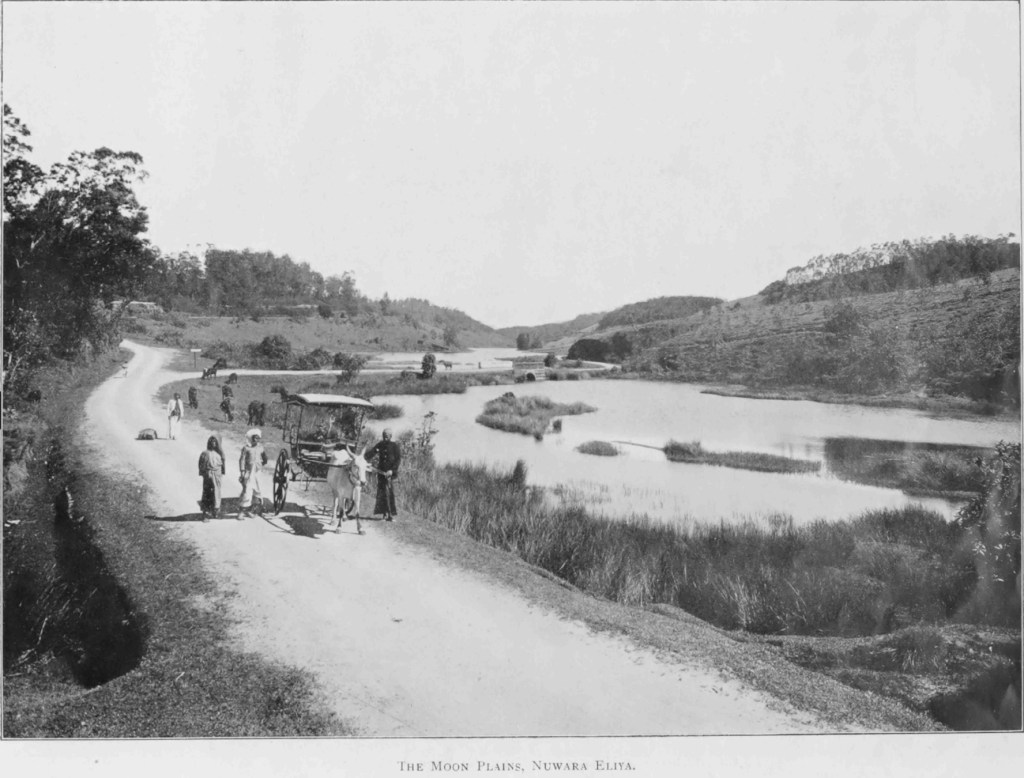


References to William Fisher’s death





John (Jack) Fisher (1841 – 1920) First Sea Lord
There has been a great deal written about Jack Fisher. So here we will focus on his early years.
Jack was born at Wavendon 9 months after his parents marriage. His father was in the army but was planning to buy himself out and join the Coffee rush that was the rage in Ceylon at the time. He had two younger sisters and unfortunately 3 other siblings who died. So perhaps things were stressful at home.
In 1847 uncle Frederick Lambe was travelling back to England and it was decided that Jack aged 6 should travel with him.
Fisher described his time in England:

Richard Freeman in “Temptestous Genius: The Life of Admiral of the Fleet Lord Fisher” writes:


Certainly Catton Hall and the attentions of Lady Wilmot-Horton as a surrogate mother were very important for this young man (and later his siblings as described by Frederick William later).
Where Fisher had gone to school was something of a mystery but a well researched newspaper article revealed all. This can be confirmed by Jack’s census records. I have covered the evidence more extensively here.


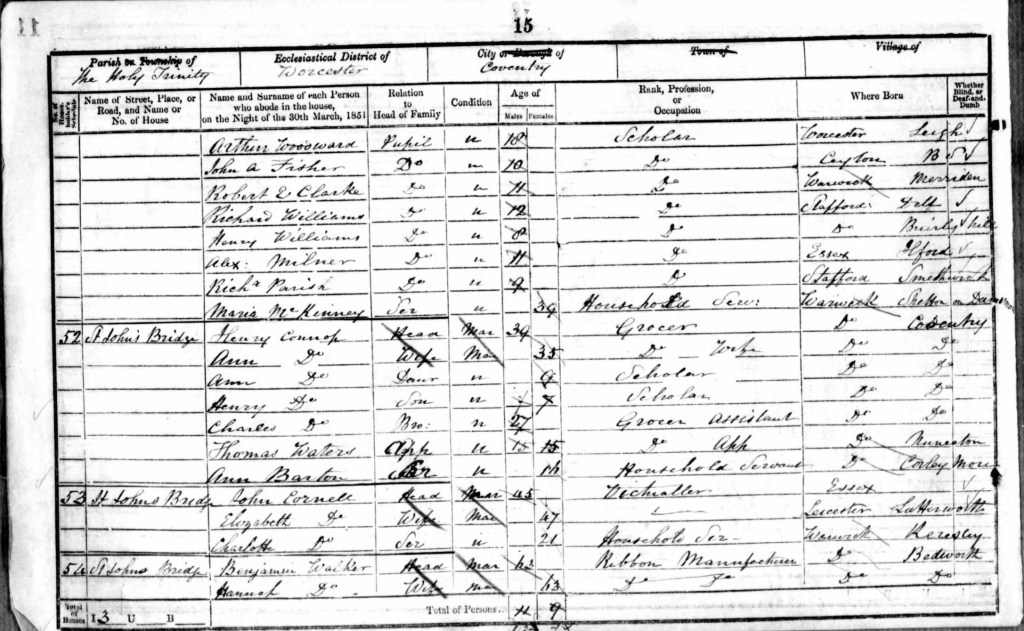


Alice Fisher (1843 – 1915)
Alice Caroline Fisher was born in Colombo on the 27 Jan 1843. Frederick Fisher states that Alice went to school in england. And returned before he left for school in 1860.
Given the precarious state of family finances I was surprised to find that the two girls were sent to school in England. I am not sure that this was very common. So I am impressed. Perhaps this is more evidence of the influence of Sophia.
William gives an amusing account about how Alice was horrified by the young boys when she returned from england and tried to tidy them up and change their manners.
Alice married Reverand Lindsay Harrison Daniells in Kandy in 1860. He was fairly wealthy and came into a fortune in about 1862 as referred to by William Fisher in his letter to Peg (see main page).
In 1864/1865 they travelled to England taking her three children and her youngest brother Philip. Perhaps Philip was coming to start school. They were back in Sri Lanka by 1866 where tragically her three children died of Cholera as described below:
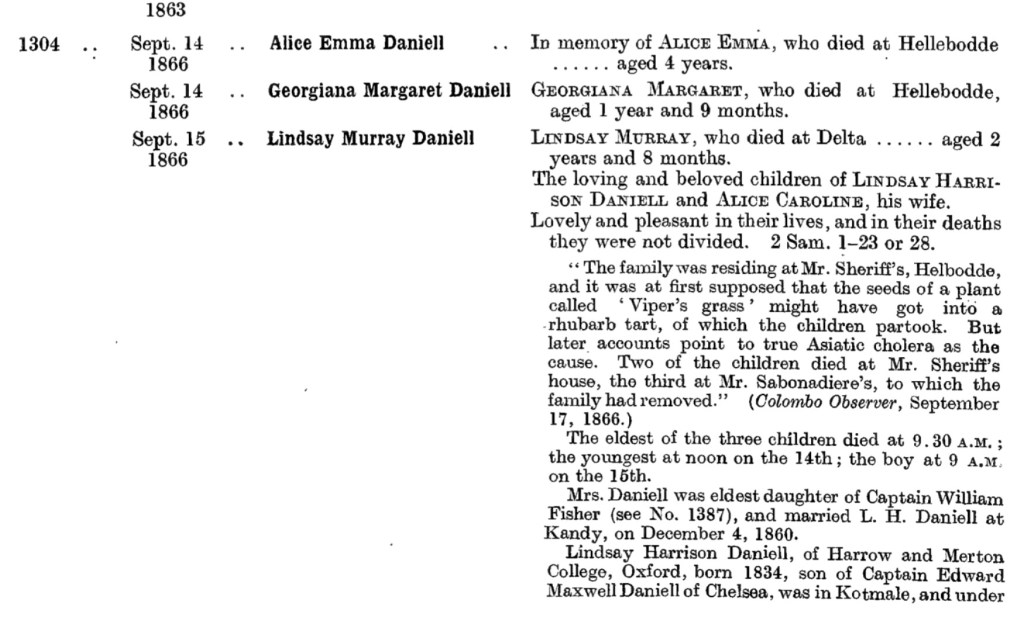
They had another child Lucy and then returned to Europe where they had two further children (in France and then Italy). In 1872 Lindsay died in Southsea, Hampshire, England.
Alice remarried her cousin Frederic Sargeaunt, a Naval Officer a few years later. Jack Fisher disapproved of first cousins marrying (there was an earlier cousin marriage in the generation above too) and vowed he would never speak to her again if she went ahead. According to her children this is exactly what happened.
They had six further children and lived into old age. Alice died in Bedford in 1915.
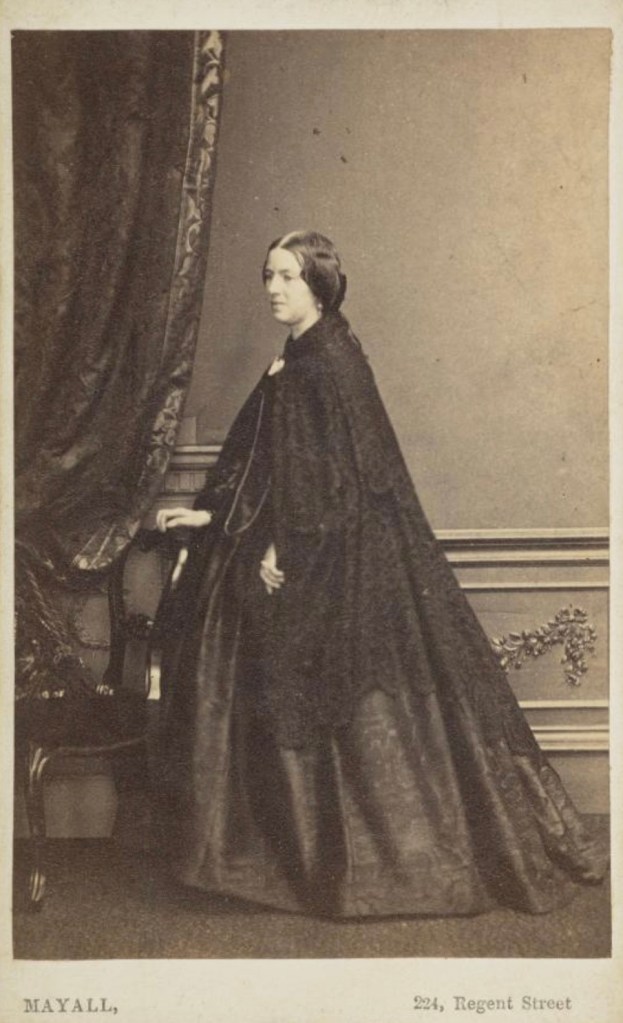
Lucy Ellen Fisher (1843 – 1915)
Lucy Ellen Fisher was born in Nuwara Elliya on the 1st December 1847. She may have been born a twin as there is a reference to a Catherine Fisher who died on this date .
Given their precarious financial state I was suprised to find that Lucy Ellen was sent to school in England but she is clearly at in Lichfield at school with her brothers in 1851. I am not sure that this was very common at the time. Perhaps this is more evidence of the influence of Sophia.
I have written a post about Lucy Ellen’s life here
Thanks
See match summary









